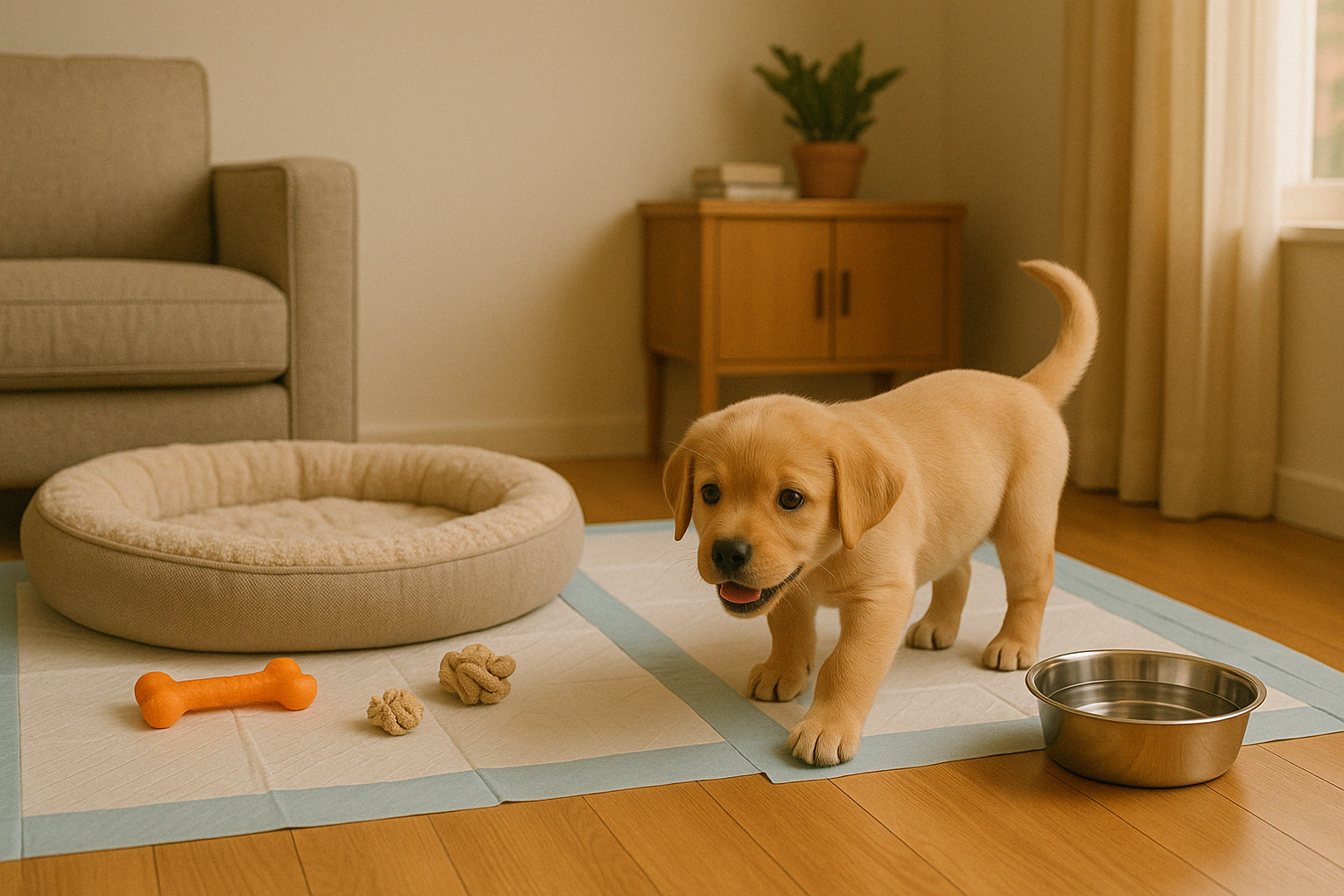Bringing a puppy home is one of life’s most exciting (and adorable) moments. But before your furry bundle of joy arrives, your house needs to be puppy-proofed and ready for their safety, health, and comfort.
In this guide, you’ll find a complete checklist to help you prepare your home for a puppy — ensuring a smooth, stress-free welcome for both of you.
Step 1: Puppy-Proof the Environment
Puppies are curious and love to explore with their mouths. Before they arrive:
- Remove electrical cords from reach or cover them
- Keep shoes, socks, bags, and small items off the floor
- Store cleaning supplies in secure cabinets
- Block access to staircases or balconies
- Move houseplants out of reach (some are toxic)
- Use baby gates to limit access to rooms
Think of it like baby-proofing — but for an energetic, teething little explorer!
Step 2: Set Up a Safe Puppy Zone
Create a designated area where your puppy can stay during the first days:
- Use a puppy playpen, crate, or gated area
- Include a bed, pee pads (if training), and water bowl
- Add a couple of chew-safe toys
- Keep it calm and free of hazards
This helps them feel secure and prevents accidents while adjusting to the new environment.
Step 3: Stock Up on Puppy Essentials
Here’s what you’ll need before bringing your puppy home:
✅ Food and water bowls (preferably non-slip)
✅ High-quality puppy food (ask breeder or vet for advice)
✅ Crate (properly sized for crate training)
✅ Leash and collar or harness
✅ ID tag with your contact info
✅ Training pads or grass patches
✅ Soft bed or blanket
✅ Chew toys and teething rings
✅ Puppy shampoo and grooming tools
✅ Waste bags and scooper
✅ Veterinary contact and vaccine schedule
Having these items ready will reduce stress and let you focus on bonding.
Step 4: Choose the Right Crate and Bed
Crate training is a powerful tool for housebreaking and safety. Choose a crate that:
- Is large enough for your puppy to stand, turn, and lie down
- Has a divider to adjust as they grow
- Feels like a “den” — cozy, quiet, and secure
Place a soft bed or blanket inside and keep the crate in a quiet area of the home, not isolated from family activity.
Step 5: Set Rules and Routines from Day One
Puppies thrive on structure. Decide early:
- Where they will sleep
- Where they will eat
- Where they can and can’t go
- When potty breaks happen
- Who is responsible for walks and feeding
Consistency from the whole family helps your puppy settle in faster and learn the rules.
Step 6: Schedule a Vet Appointment
Book a wellness check within the first week of adoption:
- Discuss vaccines, deworming, and parasite prevention
- Get microchipping or ID tag advice
- Ask about breed-specific health concerns
- Create a long-term care plan with your vet
Also, ask about spaying or neutering if not already done.
Step 7: Prepare for Potty Training
Potty training starts from day one. Tips:
- Take your puppy out every 2 hours, and after eating or waking up
- Praise them immediately after they go in the right spot
- Be patient with accidents — never punish
- Use enzymatic cleaners to remove smells from mistakes
- Consider using a bell at the door for potty cues
Stick to a schedule and celebrate small wins — it takes time!
Step 8: Introduce Slowly to People and Pets
When introducing your puppy to new people or pets:
- Keep interactions calm and positive
- Avoid overwhelming them with too much attention at once
- Supervise all early meetings with children or other animals
- Reward calm, curious behavior
Let your pup explore new smells, sounds, and faces at their own pace.
Step 9: Create a Socialization Plan
Between 8–16 weeks, your puppy is in the key socialization window. Safely expose them to:
- New people (variety of ages, genders)
- Different surfaces (grass, gravel, tile)
- Household noises (vacuum, doorbell, hairdryer)
- Other vaccinated, friendly dogs
- Car rides and basic handling (touching paws, ears, teeth)
This prevents fear and builds confidence later in life.
Final Thoughts
Bringing home a new puppy is the beginning of a lifelong friendship. With the right preparation, you can give them a safe, loving environment where they’ll grow, learn, and bond with you every step of the way. Start strong — and you’ll set the foundation for a happy, well-adjusted dog for years to come.

